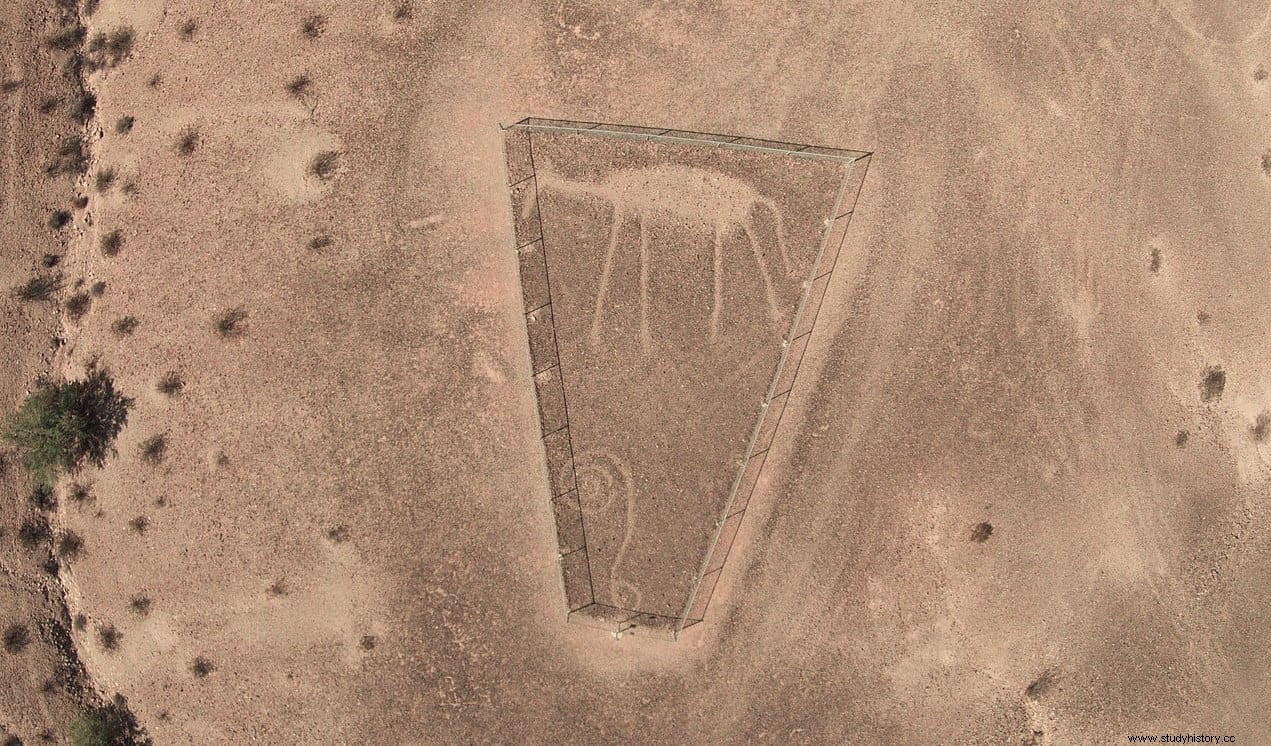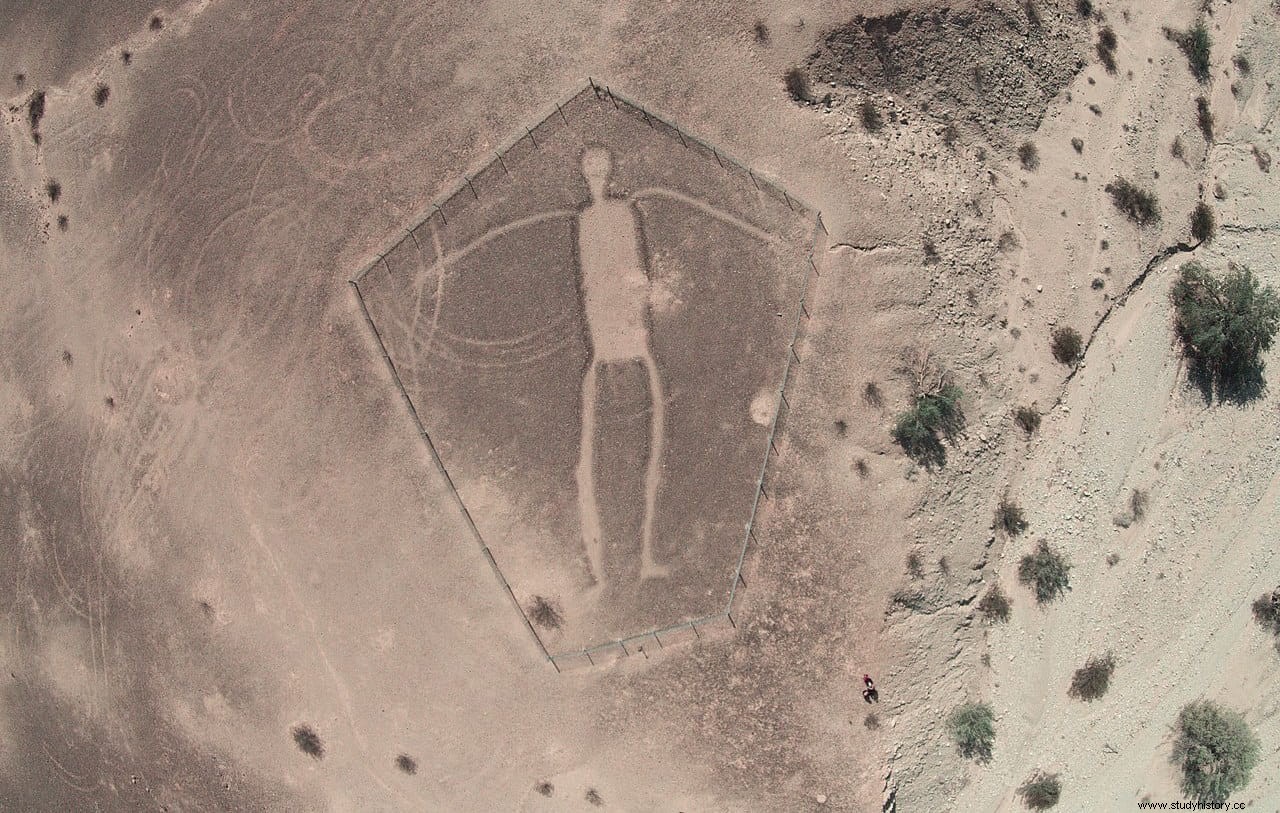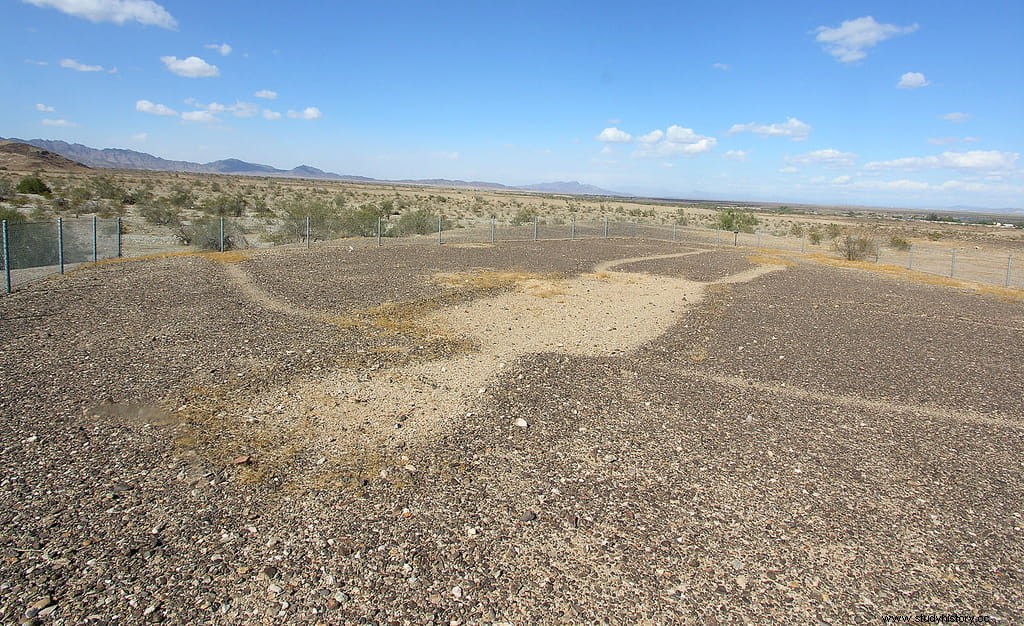Near the town of Blythe, located in the southeast of the state of California near the border with Arizona in the Colorado desert, there is a series of huge figures carved into the ground. They are not the only ones, but they are the most famous among the approximately 200 that are distributed along the Colorado River and that are the only geoglyphs found in a desert in North America.
They are called Blythe Intaglios or Blythe geoglyphs and are located west of the Big Maria Mountains, about 24 kilometers north of the city that gives them their name.
They were discovered from the air in 1932 by George Palmer, a pilot who flew his plane between Las Vegas and Blythe. The Los Angeles Museum of Natural History's curator of history and anthropology, Arthur Woodward, conducted a first survey of the area that same year. In 1939 Malcolm J. Rogers carried out a more exhaustive analysis, raising sketches and drawings of the figures.

But it would not be until 1952, when National Geographic published an article about it, that geoglyphs would become popular and visitors would begin to arrive en masse, causing some damage to them. Finally, in 1974, fences were placed around the figures to protect them.
The Blythe geoglyphs are 3 human figures, two quadrupedal animals and a spiral that were made as bas-reliefs on the hard ground of the area. This technique, which in English is called intaglio , is the one that gives its name to the set and the same one that was used to create the famous Nazca lines in Peru.

At Blythe, topsoil was removed up to 15 centimeters deep to expose the lighter soil below. Stones were then placed on the outer edge to outline the figures.
The largest of the Blythe figures is about 52 meters long and the smallest 29 meters. It is estimated that they may be between 500 and 2,000 years old and have a ceremonial character. They have been related to the Pataya culture, which inhabited the area between 700 and 1550 AD. although they could be much older.
If the quadrupedal figures represent horses (reintroduced to the North American plains by the Juan de Oñate expedition), they would date to some time after 1600. Radiocarbon analyzes carried out in 1995 yielded a range of dates from 900 B.C. until 1200 AD

Although no group of Native Americans of the Colorado River takes credit for its realization, some have claimed to have used them for religious purposes. For example, the Mojave and Quechan see in human figures a representation of Mastamho and Kataar, the hero twins of the creation myth. The animal figures would be a representation of Hatakulya, one of the two puma-men who helped create the world.
There are paths and rock alignments that lead to the figures. Some researchers have hypothesized that each of the geoglyphs would be a stopping point on a keruk pilgrimage, the mourning ceremony practiced by various native tribes in Southern California.
